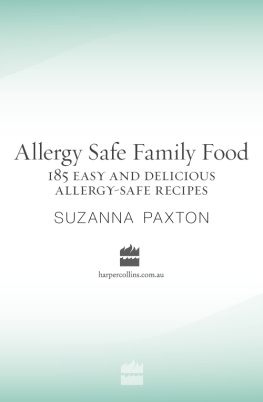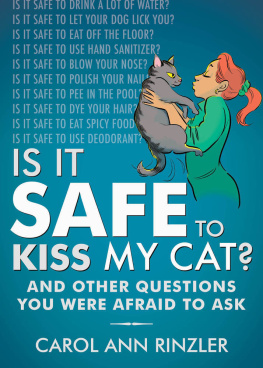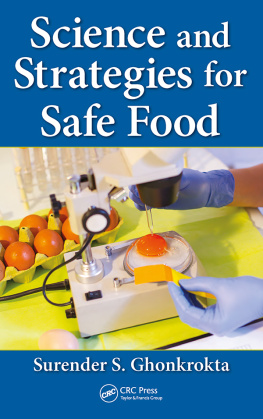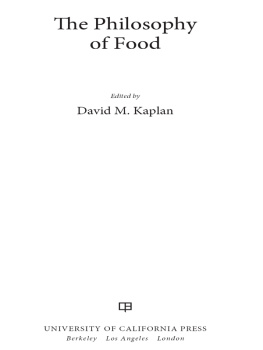Carol Ballard - Is Our Food Safe?
Here you can read online Carol Ballard - Is Our Food Safe? full text of the book (entire story) in english for free. Download pdf and epub, get meaning, cover and reviews about this ebook. year: 2012, publisher: Britannica Digital Learning, genre: Children. Description of the work, (preface) as well as reviews are available. Best literature library LitArk.com created for fans of good reading and offers a wide selection of genres:
Romance novel
Science fiction
Adventure
Detective
Science
History
Home and family
Prose
Art
Politics
Computer
Non-fiction
Religion
Business
Children
Humor
Choose a favorite category and find really read worthwhile books. Enjoy immersion in the world of imagination, feel the emotions of the characters or learn something new for yourself, make an fascinating discovery.

- Book:Is Our Food Safe?
- Author:
- Publisher:Britannica Digital Learning
- Genre:
- Year:2012
- Rating:4 / 5
- Favourites:Add to favourites
- Your mark:
- 80
- 1
- 2
- 3
- 4
- 5
Is Our Food Safe?: summary, description and annotation
We offer to read an annotation, description, summary or preface (depends on what the author of the book "Is Our Food Safe?" wrote himself). If you haven't found the necessary information about the book — write in the comments, we will try to find it.
Is Our Food Safe? looks at the food we eat and questions how much we can take for granted about its safety.
Is Our Food Safe? — read online for free the complete book (whole text) full work
Below is the text of the book, divided by pages. System saving the place of the last page read, allows you to conveniently read the book "Is Our Food Safe?" online for free, without having to search again every time where you left off. Put a bookmark, and you can go to the page where you finished reading at any time.
Font size:
Interval:
Bookmark:

E-book published in 2012 by Encyclopdia Britannica, Inc., in association with Arcturus Publishing Limited, 26/27 Bickels Yard, 151-153 Bermondsey Street, London SE1 3HA. Britannica, Encyclopdia Britannica, and the Thistle logo are registered trademarks of Encyclopdia Britannica, Inc.
ISBN 978-1-61535-664-5 (e-book)
This edition first published by Arcturus Publishing
Distributed by Black Rabbit Books
P.O. Box 3263
Mankato
Minnesota MN 56002
Copyright 2008 Arcturus Publishing Limited
All rights reserved.
Library of Congress Cataloging-in-Publication Data
Ballard, Carol.
Is our food safe? / Carol Ballard.
p. cm. -- (Global questions)
1. Food--Safety measures--Juvenile literature. I. Title.
TX537.B273 2009
363.19262--dc22
2008016664
9 8 7 6 5 4 3 2
The right of Carol Ballard to be identified as the author of this work has been asserted by him/her in accordance with the Copyright, Designs and Patents Act 1988.
Series concept: Alex Woolf
Editor: Nicola Barber
Designer: Ian Winton
Illustrations: Stefan Chabluk
Picture credits:
Corbis: cover (Holger Winkler/zefa), 8, 16 (Sion Touhig), 30 (Lester Lefkowitz), 36 (Jean Pierre Amet/BelOmbra), 38 (Jim Richardson), 39 (Francois Lenoir/Reuters), 40 (Gideon Mendel). Science Photo Library: title page and 35 (Cordelia Molloy), 6 (Maximilian Stock Ltd), 11 and 31 (Peter Menzel), 15 (Chris Knapton), 19 (David Parker), 21 (Scott Sinklier/AG Stock USA), 22 (Victor de Schwanberg), 23 (Andrew McClenaghan), 24 (Gusto Images), 26 (NIAID/CDC), 33 (Jane Shemilt), 41 (Philippe Psaila), 43 (Victor Habbick Visions). Shutterstock: 9 (Supri Suharjoto), 28 (Alan Egginton), 29 (Agphotographer).
Every attempt has been made to clear copyright. Should there be any inadvertent omission, please apply to the copyright holder for rectification.
Cover: A man wearing a clean suit sprays crops in a greenhouse with pesticide.
Is our food safe to eat?
Food provides you with the energy needed for everything you do and with all the chemicals your body needs to grow, to repair damage, and to stay healthy. When you take a mouthful of food, you probably enjoy the taste. Depending on what you are eating, you might expect your food to be good for you, too. But what if the food you eat actually makes you sick? If food looks or smells bad, chances are you wont eat it, but could there be hidden dangers that you cannot detect? We generally take it for granted that our food is safebut how safe is it really?

These workers are arranging fish sticks into rows at a food-processing factory. Today much of our food is produced in similar factories.
As many as 925 million people were suffering from chronic hunger in 2010, according to the United Nations, and more than 14,000 children were dying every day from hunger-related causes. In most developed countries, however, there is plenty of food. What worries many people in these countries is not whether they have enough food, but whether the food they do have is safe to eat. While some people are anxious that there might be hidden problems with their food, others are happy to accept assurances from governments and producers that the food is perfectly safe. Strict regulations cover every aspect of food production, from growing crops and raising animals through to processing, packaging, storage, and sale. There are rigorous standards, and officials check that these standards are maintained.
Expert View
After combining the estimates for the major known pathogens and the unspecified agents, [the CDC concludes that] the overall annual estimate of the total burden of disease due to contaminated food consumed in the United States is 47.8 million illnesses, 127,839 hospitalizations, and 3,037 deaths.
US Dept. of Health & Human Services, Centers for Disease Control and Prevention (CDC) website, 2011
The potential dangers fall into three main categories:
Genetic modification (GM) This scientific technique can be used to produce new foods, but despite reassurances from scientists, not everybody is convinced that GM foods are safe.
Chemicals These may be added at various stages of food production and processing, and some may not be good for us.
Microbes Eating food contaminated by some microbes can cause serious illness.
Our ancient ancestors lived on whatever food they could find: they roamed to hunt animals and to seek out edible plant parts such as fruits, berries, and nuts. Over many thousands of years, a gradual change took place. People sowed seeds, tended plants, and harvested crops. They domesticated and looked after animals to provide themselves with milk, eggs, and meat.
Early farmers grew what they and their families or social groups needed, relying on native plants and animals that were suited to the environment in which they lived. Gradually, processes of selection began to occur. For example, by choosing to plant seed, from only the strongest, healthiest plants, farmers ensured that future generations of plants would be even stronger and healthier.
They also found ways of storing food so that even in winter, when fresh food was scarce, there was something to eat. Drying, smoking, salting, and pickling all helped to preserve food until it was needed.

This photograph from 1939 shows a woman sorting peas in her storeroom, with the previous years preserved fruits and vegetables in jars and cans on the shelves and floor around her.
As societies and civilizations developed, farming methods became increasingly organized and sophisticated. Explorers and traders brought new foods from distant lands, expanding the range of foods available. The nineteenth and twentieth centuries were periods of rapid progress. Electricity and machinery speeded up many processes previously done by hand, while steam ships, trains, and airplanes reduced journey times. Some scientists unraveled the secrets of genetics and inheritance, while others investigated chemicals. They studied microbes and developed ways of combating them. New materials such as plastic were invented, and household appliances such as refrigerators and freezers became commonplace. Everyday life was transformed.
FORUM
People hold different views about the merits of traditional versus modern farming methods:
I believe there is a real and prosperous future for the traditional family farm, in some cases on a more diversified basisalthough I know very many farmers have already taken those steps I would be astonished and dismayed if we were to see the disappearance of the traditional family farm.
Margaret Beckett, UK environment secretary, 2001
There is a need to continue to intensify farming. Organic farming has a place but it will never feed the growing population of the world.
Next pageFont size:
Interval:
Bookmark:
Similar books «Is Our Food Safe?»
Look at similar books to Is Our Food Safe?. We have selected literature similar in name and meaning in the hope of providing readers with more options to find new, interesting, not yet read works.
Discussion, reviews of the book Is Our Food Safe? and just readers' own opinions. Leave your comments, write what you think about the work, its meaning or the main characters. Specify what exactly you liked and what you didn't like, and why you think so.






